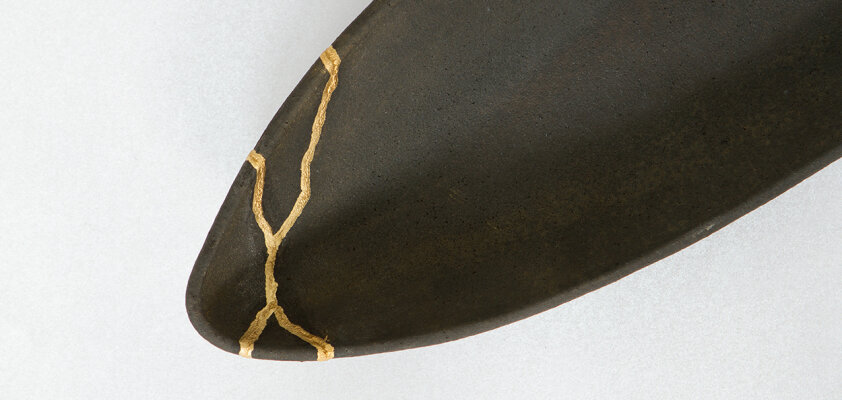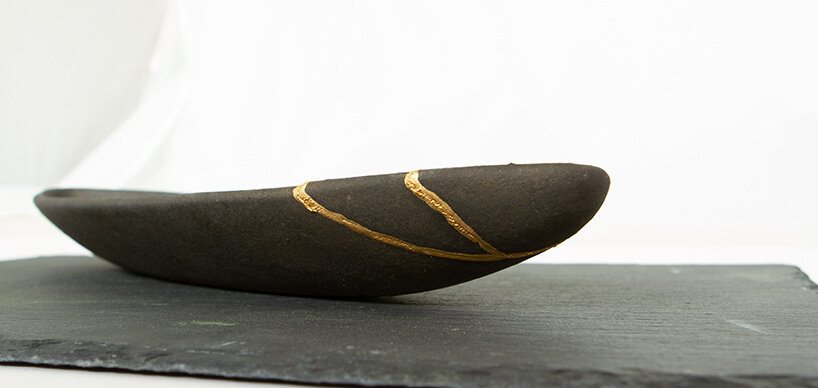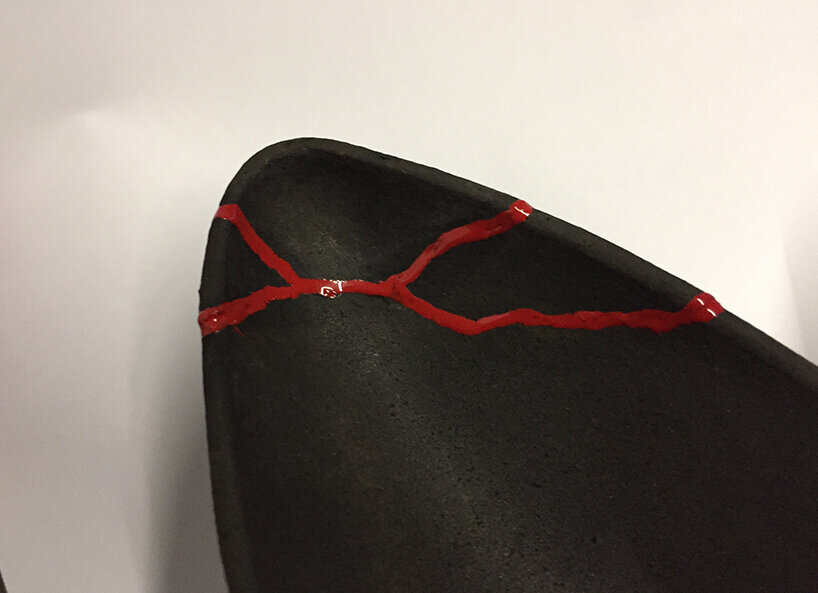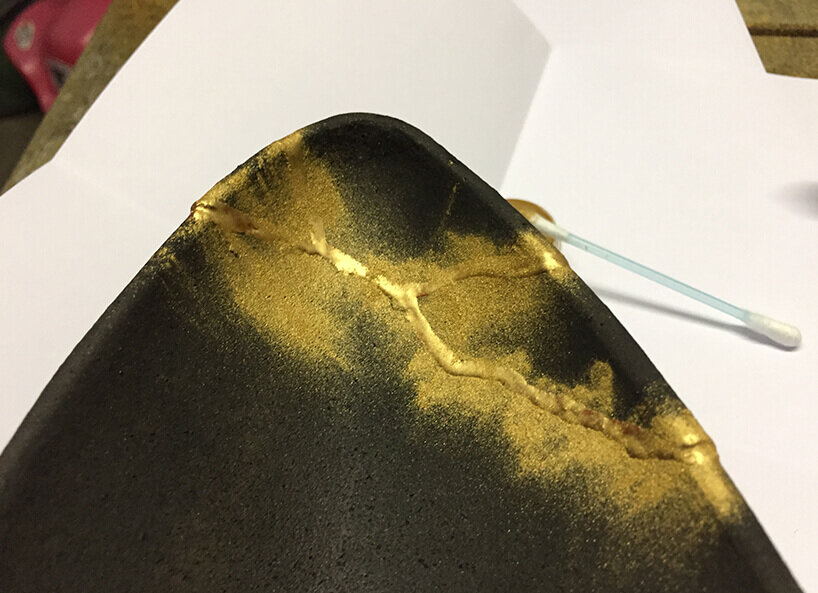Kintsugi Technique - A Japanese Design Philosophy

When ceramic items break in our culture, they are either thrown away or repaired in a way that conceals the damage as much as possible. Why not repair the broken object and emphasize the fracture with a precious metal? Sounds strange, but that's the principle of Kintsugi. It highlights that from something seemingly destroyed, something much more valuable and unique can emerge.
Imperfect instead of flawless
To understand Kintsugi, one must first grasp Wabi-Sabi. This principle of Japanese aesthetics emphasizes the beauty of imperfection and the used, the transient and authentic – in contrast to Western ideals of beauty based on geometry and symmetry. It also forms the basis of many traditional arts such as poetry, Ikebana, and the tea ceremony. The concept of Wabi-Sabi has been present in Japanese thinking since the Middle Ages, but the term was coined in the 16th century by the first tea master, Sen no Rikyū. Mindfulness and contentment with what one has are essential components of Wabi-Sabi, originating from Zen Buddhism.
Like Buddhism, Kintsugi also came from China to Japan – albeit indirectly. The reason was the beloved Chinese teacup of the Japanese Shogun Ashikaga Yoshimasa over 500 years ago. It was accidentally broken and sent to China to be repaired by craftsmen there. However, the Shogun was dissatisfied with the result: Metal staples were used for the repair, distracting from the beauty of the cup. This prompted Japanese ceramic masters to develop the Kintsugi technique, creating a new artwork from a broken object. Kintsugi has since become increasingly popular, leading to intentionally breaking valuable porcelain to have it repaired in this way.
Objekt: Decorative ship Kuro Yuuga by Shinobu Hashimoto.
More than just the sum of its parts
To reassemble pieces, Urushi is used, a natural lacquer widely employed in Japanese lacquerware (Shikki), woodworking, and art. In Kintsugi, it is often golden – hence the name, which roughly translates to "repair with gold." The Urushi lacquer is mixed with gold dust or gold leaf for this purpose. Silver, copper, bronze, or platinum are also possible. The precious threads running through the ceramic enhance the result compared to the original product.
Why Urushi? The natural lacquer from the resin of the lacquer tree is the oldest and hardest of all natural lacquers and can easily be mixed with metals – such as iron filings for black lacquer. Eating and drinking from repaired vessels is not a problem, as Urushi contains only natural substances and is completely non-toxic when cured. Although it is very durable and resistant, it should still be protected from direct sunlight to avoid fading and hairline cracks.
In addition to the simple reassembly of parts with Urushi, there are two other techniques. If a part of the broken object is missing, the Yobitsugi repair adds a piece from another ceramic container, often with a different pattern. On the other hand, with Makienaoshi, the missing part is replaced with several layers of Urushi lacquer, and if necessary, even the pattern of the bowl, cup, vase, or pot is imitated.

Kintsugi repairs can be elaborate – in complicated cases, they can even take months. The repair is done step by step and layer by layer, each with different drying times and subsequent sanding. Special humidifiers, Urushi-Furo, are used for this purpose, providing the best conditions for the Urushi lacquer to cure. Precious metals can either be mixed directly into the lacquer or sprinkled over the freshly applied final layer (Maki-e technique). Today, there are also numerous simplified Kintsugi kits available for designing at home.
With Kintsugi, broken ceramics do not lose their value. Just as our own scars make us stronger, once-broken objects tell their own unique story. So why discard something when you can make it even more beautiful than before?













-from-the-yakiyaki-grill-pan.jpg)




